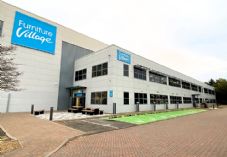UK DIY News
Sustainability In Construction: Sourcing Eco-Friendly Materials
Construction projects are now regulated to ensure that sustainable building measures are implemented which positively affect the environmental impact of any scheme.
For years, eco-friendly homes were a bit off-the-wall; the sort of thing that we might see on property programmes like Grand Designs. But, now, with any new building plans, they have to be the norm.
What does that involve? It means that the materials you use have to be natural, and they have to be durable, reusable and recyclable – or already recycled – in their composition. They also have to be sourced locally, cutting down further on the potentially negative environmental outcome that arises from transporting from further afield.
The first step is to decide which materials are best suited to the project you are working on. Researching other similar projects may help to provide ideas and solutions that you hadn’t already considered within your organisation.
Which eco-friendly materials can be used in construction?
There are many eco-friendly commodities that can, and are, used in construction projects. Bamboo is currently the most-used in the industry, due to its fast-growing properties, hard-wearing nature and low cost. Bamboo has a higher compressive strength than wood, brick or concrete and a tensile strength that rivals steel.
Recycled steel is another popular choice for building. Steel can be sourced from scrap merchants extracted from the likes of old cars. It is the most recycled material in the world and recycled steel is used in the manufacture of all new steel.
An alternative eco-friendly option for roofing companies is fibre cement. Low maintenance fibre cement is a 100% recyclable material that comes with a 50-year life expectancy (because the sheets do not rust or corrode) and is manufactured in the UK.
Reclaimed or recycled wood is fairly easy to get hold of and can add character to a new-build home, creating exposed beams or natural wooden floors to give it an authentic, antique look for your customer.
For insulation, sheep’s wool, rammed earth or plant-based polyurethane rigid foam are all eco-friendly and easily attainable from natural sources. The latter is made from kelp, hemp and bamboo and gives mould and pest protection as well as offering heat and sound insulation.
Tools and techniques for choosing materials
Undertaking detailed analysis of the environmental impact of each material and giving it an environmental preference star rating based on how closely it resembles the necessary properties of more traditional components is one way to help decide on the best material for your company to invest in and the project at hand.
Secondly, creating an eco-point, which is a single score that measures total environmental impact as a proportion of the overall impact occurring in the UK and then aggregating these in accordance to the quantities required for a given building project helps to assess its green credentials.
Calculating CO2 emissions is one of the most well-known methods companies use when establishing how eco-friendly something is, and sourcing construction materials is no different.
Simply using a hierarchical approach to determine the best material from an environmental standpoint and making strategic decisions within your organisation based on this descending list could be all you need to ensure your business and projects are eco-friendly.
Choose materials that adopt a zero-waste philosophy
Re-use materials and components in situ
Use reclaimed materials with little processing
Use manufactured materials with significant and known recycled content
Use natural materials that have low embodied energy
Projects that have used sustainable building materials
Advancements in construction technology, ranging from whole build systems to components such as glazing, mean that the desire to produce a highly energy-efficient dwelling no longer curbs your design choices.
A farmhouse renovation in Gloucestershire from 2012-2014 saw a timber frame combined with hempcrete, sitting on a passive slab to reduce heat loss through the floor. The windows were triple-glazed and solar panels were fitted to the roof to further harness the power of the sun. A log boiler to provide heating in the winter is situated in the garage, and rainwater is collected to supply the toilets and washing machine.
To remain in keeping with surrounding buildings, a self-build zero-carbon rated house in St Austell in Cornwall utilised straw bales in conjunction with lime render for the base construction material, with the supporting timber frame made from reclaimed wood from a salvage yard, which had initially been part of a psychiatric hospital in Bodmin.
An eco-home in the New Forest re-used soil excavated for its basement and pool to create a berm at the front. The earthy mound blocks noise from a nearby busy road, helps insulate the house, and saved the owners £30,000 in removal costs. The 250sqm property also uses solar photovoltaic panels, a refurbished well for drinking water, a ground-source heat pump and a log boiler for heating and hot water.
Final thoughts
The benefits of eco-friendly construction are felt in all areas, and with an added impetus on ensuring building projects conform to regulations, the supply of eco-friendly materials is becoming much easier to source for many businesses within the sector.
As more and more homeowners begin to prefer using local suppliers, this can lead to the development of sustainable supply chains that support local economic development, as well as the environment.
Source : Kelly Edwards - https://www.linkedin.com/in/kellyedwardsinterior/
Insight DIY always publishes the latest news stories before anyone else and we find it to be an invaluable source of customer and market information.











































